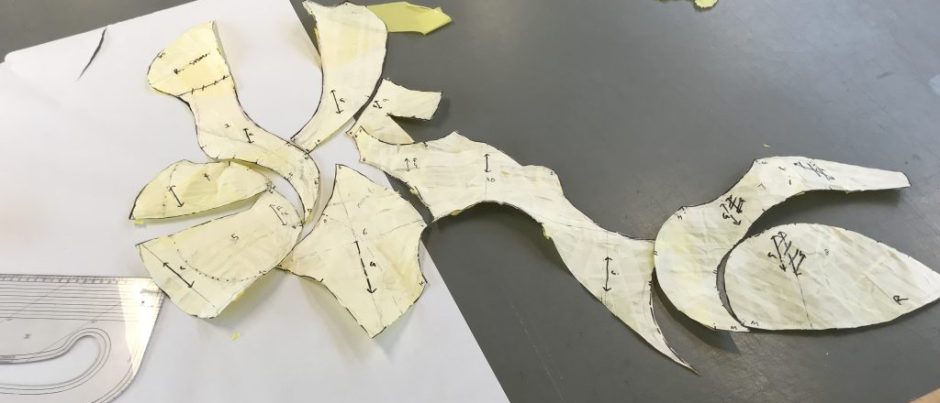Feedback and Comments from Navinbhai Patel: Specialist Technician, Garment Technology
(Notes taken from an audio recording of an in-person meeting at LCF on 27/06/2024, at approx. 4.00pm)
- Navin agreed that the current model of risk assessment is strange in that it doesn’t have subheadings to guide the user.
- Navin suggested peer-to-peer spatial risk assessment would work well for those with similar disciplines, where other staff members could leave notes of feedback around the room.
- Power struggle and claiming of space is a problem in Navin’s space too. Could this address this too? Could it be part of the prompts? Navin does put some systems in place, such as labelled cupboards (Figure 1).
- Navin thought this would be a really interesting activity to carry out in the new LCF building – particularly the ‘heart spaces’ (Figure 2) which are supposed to encourage a fluid way of working, but actually result in a noisy, overcrowded workshop environment as they have no sound separation from the other floors in the center of the building. We discussed the oversight in asking for technicians input in the design of the building’s interior.
Figure 1: Labelled cupboard spaces at LCF

Figure 2: One of the ‘heart space’ teaching studios at LCF

Feedback and Comments from James Hopkins: Specialist Technician T&L Foundation, 3D Digital
(Notes taken from an audio recording of an in-person meeting at LCF on 27/06/2024, at approx. 4.00pm)
- James agreed that this activity would require the perspectives of other technicians, ideally from other buildings or departments.
- James suggested that a natural footpath use test might enlighten further understanding of spaces, or recording use in some way – and that maybe this could be incorporated into the design of the tool too.
- James thought that this would be a good thing to do every year, similar to a risk assessment.
- The same physical space issue happens in James’ environment too – the confident students, usually home students, take up the most of space. We discussed at length how difficult it is to know if students are being prevented from using the space because of barriers, or if this sometimes comes from a position of wanting to work from home, and how to disentangle these two possibilities.
Reflections and moving forwards
Anonymous Feedback
Navin’s feedback reminded me of a technique that Tommy Ramsay, a fellow pg cert student, uses with foundation students, where they leave anonymous feedback for one another, in the space on post-it notes. This would potentially reduce the risk of identity threat, and the need to expose one’s identity in the process of the assessment.
Collaboration and Community
Reflecting on our discussion, and the one I had with Verity and Michael earlier that day, I wonder if this could become some kind of interdepartmental/cross college activity? An all day knowledge exchange of practice, where we show each other our spaces, do making activities as embodied risk assessment, then feedback to one another with intersectional inclusion in mind? This may be practically difficult to arrange, but then again could slot into the technical conference well.
Time
Within the timeframe of this project, I will not be able to test all of the developed ideas I have taken from this feedback before the submission deadline, which perhaps reflects some of the issues we face within educational institutions – our limited resources, time, and budgets meaning we are reactionary rather than preemptive.
I could however, develop this further through the action research project, and test my designs out with willing colleagues and peers, like Navin and James, in looking towards a design which is easily transferrable to other departments.
